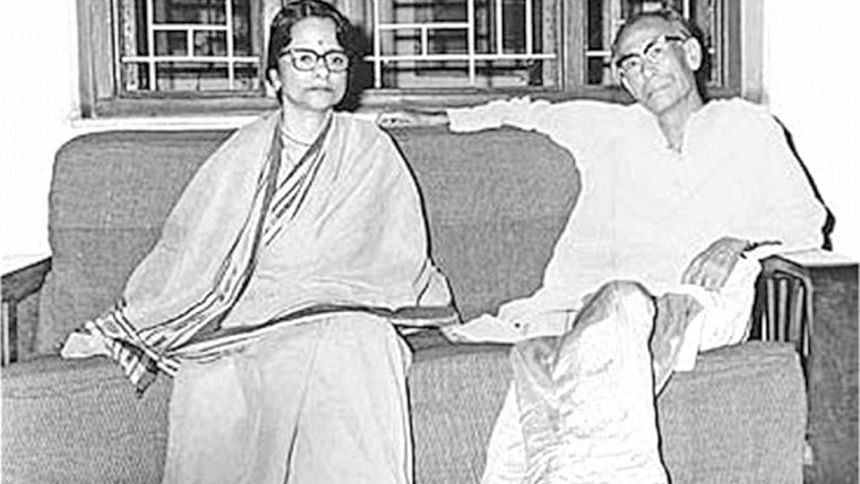The Voice of the Bhati Regions of Bangladesh

Make a YouTube search: "SD Burman Cover Bangla". See how many artistes have sung covers of Sachin Dev Burman's Bangla songs. S.D. Burman, as he's known outside Bengal, redefined Hindi film music with Bhatiyali tunes and rural instruments from his birthplace, the banks of the Gomti River in Comilla. He was the first Bengali composer whose tunes rocked the whole of South Asia. However, there was one thing this maestro may never have achieved. On the eve of his 40th death anniversary on October 31, 2015, let's see what the Burman couple, Sachin and Meera did for their birthplace, Bangladesh.
It was 1971. Bangladesh was fighting for her existence. The partition in 1947 meant it wasn't possible for Sachin to return back to Comilla and Meera to return back to Wari in old Dhaka. Like many other artistes from East Bengal who left their homesteads to make a new life in India, they joined the fight to free their birthplace: SD with a song and Meera with the lyrics to the song.
Since his first recording in 1932 till 1971, S.D. reached heights others could only dream of. He was the number one music director of Bollywood. He was an outstanding composer who could create popular and classical tunes. He had a unique husky voice that was classically trained. Finally, he had a unique ability to present Bangla folk tunes to an urban audience.
As a music director, S.D. knew that a tune is only a part of a song. Who will sing the song? How can the tune be matched to the lyrics and the visualisation? How will the instruments be presented? Will the instruments have a life of their own or just remain in the background? Will the percussion (drums) move at the same beats of the singer or at off beats? How many times and how will the same tune be repeated? How long will the song be? Finally, who is the audience?
S.D.'s edge was his ability to understand his audience. He could choose the right artiste and hands to make a song a complete experience. When he recorded a Bangla single, it was mainly for Indian Bengalis. He never had the opportunity to sing for the people of his birthplace, Bangladesh. Bangla Ma was calling. The Burman couple was ready to send back tunes to the Bhati regions that gave
them birth.
Two songs were recorded: Takdum Takdum Bajai Bangladesh-er Dhol and Ke Jash-re Bhati Gang Baiya. For Takdum Takdum, Meera rewrote the 1951 Shei Je Dinguli of Mohini Chowdhury (from Comilla) in the guise of Tak Dhum Tak Dhum Baje from the Hindi film Bombai Ka Babu (1960) (lyrics by Majrooh Sultanpuri).
In Takdum Takdum, S.D. and the dhol both sang to express their gratitude for their birth to Bangla Ma with Bangla Jonom Dila-y Amare. The words and the expression are spot on rural Bangladesh. In Ke Jash-re, S.D. sings the inability of Meera to return back to her ancestral home in Bangladesh.
Doesn't it make you happy to know it was someone who grew up in Bangladesh whose tunes made a billion people stop for even just once in their lifetimes? In spite of all the razzmatazz of the film world, that individual never forgot his roots, his Bangla Ma, his Bangladesh. The voice of S.D. will echo in the hearts of Bangladesh for as long as the Bhati regions flow to the sea.
Asrar Chowdhury teaches economic theory and game theory in the classroom. Outside he listens to music and BBC Radio; follows Test Cricket; and plays the flute. He can be reached at: [email protected]

 For all latest news, follow The Daily Star's Google News channel.
For all latest news, follow The Daily Star's Google News channel. 



Comments